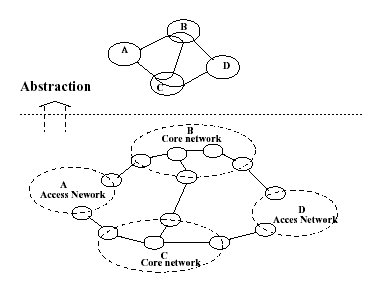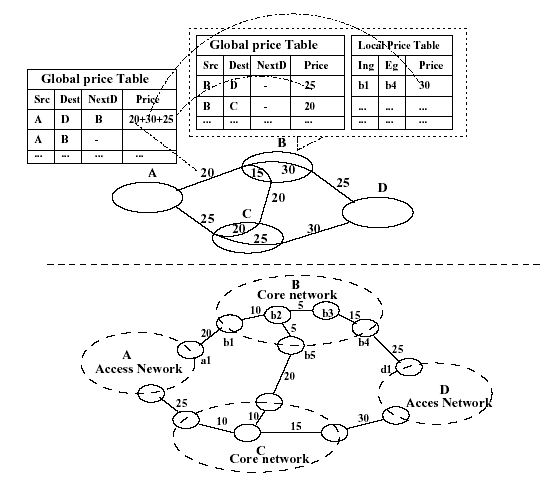SMARTNETS
|
Flat-rate pricing is widely used in the current Internet because it is simple and predictable. However, with the Internet evolving into a multi-service network, an effective and efficient QoS pricing scheme has to be developed in order to provide QoS differentiation. Currently, two QoS architectures: Integrated Services and Differentiated Services have been standardized by the IETF to support QoS in the future Internet. Due to the inherent scalability problem of the IntServ approach, it is generally believed that DiffServ is more likely to be implemented in the Internet core. It is generally believed that a practical approach for End-to-End QoS is to implement DiffServ in the core and IntServ at access. Unlike IntServ, which can charge users based on the allocated resources, pricing for DiffServ networks is more complicated and has drawn a lot of attention in the networking community. So far, a lot of researches have been done in this area but there hasn't been a widely accepted solution yet. In this project, we investigate various aspects of pricing in DiffServ networks: 1) Economic Efficiency: Since pricing itself is a economic problem, how to achieve economic efficiency is very important. Many optimal pricing schemes have been proposed to address this issue. Most of approaches assume a known user utility function and establish a optimization model to either maximize the user benefit or provider revenue. However, the major problem with this kind of approach is that user utility function can not be well defined in short term and sometimes even very difficulty in long term. The effectiveness of such schemes is still questionable. An alternative is to create a market environment and let users bid for the network usage. This type of approach does not assume a known user utility function and achieves economic efficiency perfectly. However, the implementation overhead is quite significant in this case. In this project, we examine the possibility of using some simple and practical pricing strategies and the level of economic efficiency it can achieve. 2) Simplicity Although economic efficiency has been the main focus for a lot of studies, many researchers believe that optimal pricing can not be achieved in practice and suggest that we should emphasize the implementation issues. Those issues include what is the architecture framework, how to collect information for the price setting, how to exchange the price information once the price is set, how complex the architecture is, and how scalable the architecture is. We believe a flexible and scalable architecture is crucial especially when the scale of the problem is of the Internet. In this project we propose a tariff-based framework which address these issues in particular. 3) Quality of Service Last but not the least is the Quality of Service aspect. Since price is such an important economic incentive to the users, it is often considered as an effective mechanism for traffic management. Indeed, many proposed pricing schemes entail either congestion control or admission control or even both. In this project, we first have a close look at the relationship between pricing and these two traffic management functions and integrate pricing and admission control into the framework to achieve better QoS. |
|
The key design choices we made during the development of our framework are:
To address the scalability issue, we use the concept of domain abstraction which is to abstract the entire domain into a single node. Figure 1 illustrates this idea. |
|
Figure 1. Domain Abstraction
|
|
Now, we are able to maintain two-tier price tables: domain price table for each domain and global price table for the abstracted global network. Figure 2 give a example of global price table in our framework. In this way, we are able to decouple the pricing for core from end-to-end pricing and enable a fast decision making process with much less messaging overhead than using end-to-end signaling approach such as RNAP or other type of signaling protocols. |
|
Figure 2. Global price tables
|
We follow two simple and intuitive rules for
price setting strategy:
Since we maintain the global price table at access, now we can use the price for admission control immediately. In this project, we also investigate the relationship between pricing and admission control in details and devise an algorithm for admission control using price as the primary criterion. |
|
|

